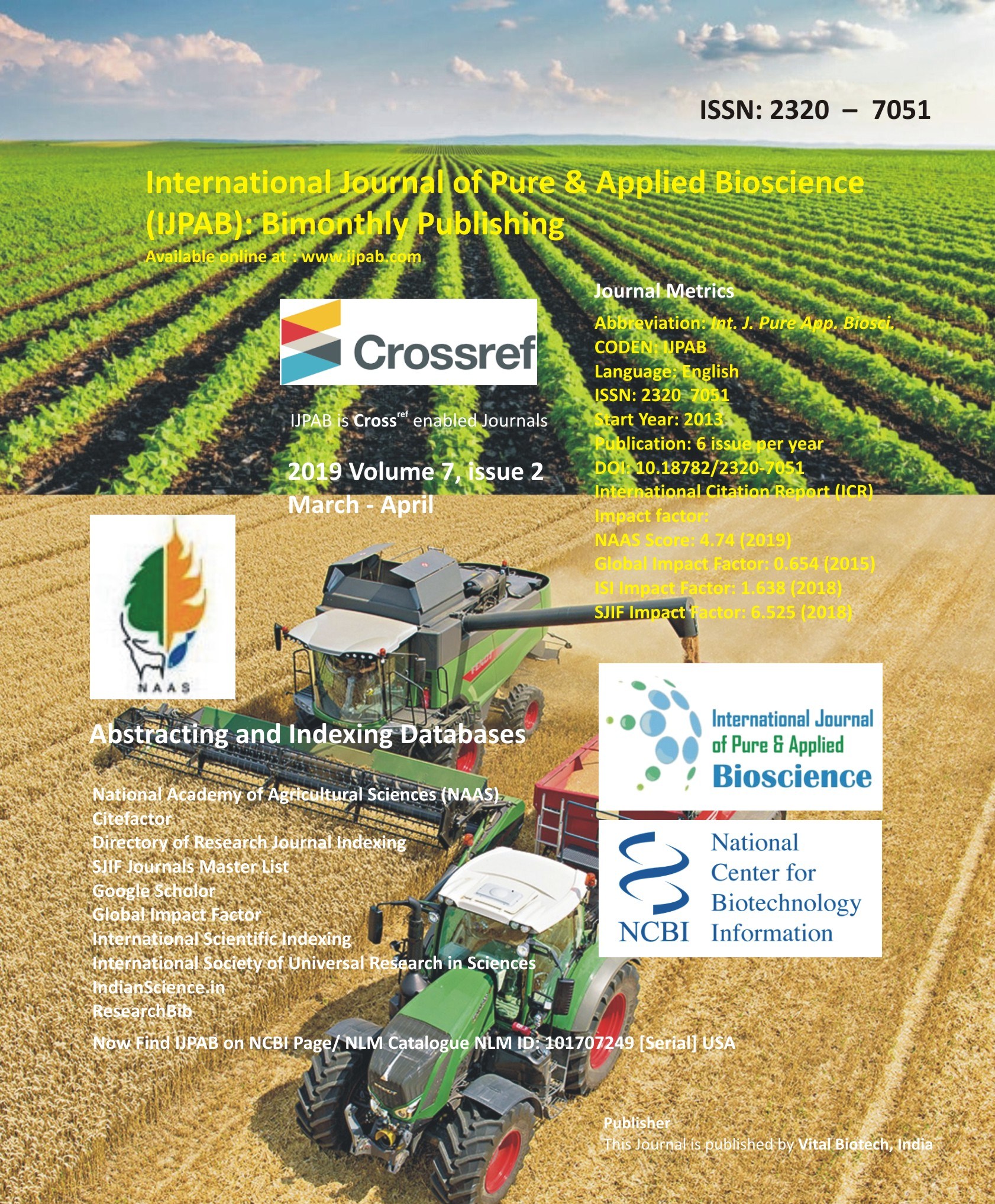
-
No. 772, Basant Vihar, Kota
Rajasthan-324009 India
-
Call Us On
+91 9784677044
-
Mail Us @
editor@ijpab.com
International Journal of Pure & Applied Bioscience (IJPAB)
Year : 2019, Volume : 7, Issue : 2
First page : (382) Last page : (395)
Article doi: : http://dx.doi.org/10.18782/2320-7051.7425
Mango (Mangifera indica L.): Morphological and Genetical Diversity in India
Abhinav Kumar Singh1*, Neeraj Kumar Charmkar1 and Rajesh Singh2
1Centre for Biotechnology Studies, A.P.S. University, Rewa (M.P.)
2KVK, College of Agriculture, Rewa (M.P.)
*Corresponding Author E-mail: tripathibt1984@rediffmail.com
Received: 3.03.2019 | Revised: 7.04.2019 | Accepted: 16.07.2019
ABSTRACT
Mango (Mangifera indica L.) is known as the 'ruler of natural products' for its rich taste, season, shading, creation volume and various end use. It has a place with plant family Anacardiaceae and has a little genome size of 439 Mb (2n = 40). Old writing shows inception of developed mango in India. Albeit wild types of sort Mangifera are circulated all through South and South-East Asia, recuperation of Paleocene mango leaf fossils close Damalgiri, West Garo Hills, Meghalaya point to the beginning of class in peninsular India before joining of the Indian and Asian mainland plates. India delivers in excess of 50% of the world's mango and develops in excess of thousand assortments. Notwithstanding its enormous financial criticalness genomic assets for mango are restricted and hereditary qualities of helpful plant characteristics are ineffectively comprehended. Here we present a short record of our ongoing endeavors to create genomic assets for mango and its utilization in the examination of hereditary assorted variety and populace structure of mango cultivars.
Sequencing of leaf RNA from mango cultivars 'Neelam', 'Dashehari' and their mixture 'Amrapali' uncovered generously more elevated amount of heterozygosity in 'Amrapali' over its folks and created genic basic grouping rehash (SSR) and single nucleotide polymorphism (SNP) markers. Sequencing of twofold processed limitation site-related genomic DNA (ddRAD) of 84 assorted mango cultivars recognized 1.67 million top notch SNPs and two noteworthy sub-populaces. We have collected 323 Mb of the exceedingly heterozygous 'Amrapali' genome utilizing long succession peruses of PacBio single atom ongoing (SMRT) sequencing science and anticipated 43,247 protein coding qualities. Mangifera indica L. is the most prevalent and broadly developed natural product crop in the tropics. As indicated by verifiable information, mango trees are personally associated with Indian culture and old stories since 4000 years prior.
Key words: Mango (Mangifera indica L.), SSR, RAPD, SNP markers, Genetic diversity.
Full Text : PDF; Journal doi : http://dx.doi.org/10.18782
Cite this article: Singh, A.K., Charmkar, N.K., Singh, R., Mango (Mangifera indica L.): Morphological and Genetical Diversity in India, Int. J. Pure App. Biosci.7(2): 382-395 (2019). doi: http://dx.doi.org/10.18782/2320-7051.7425

